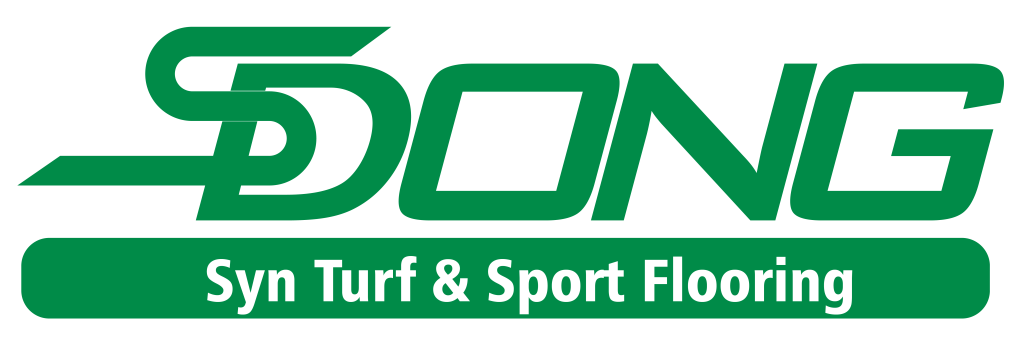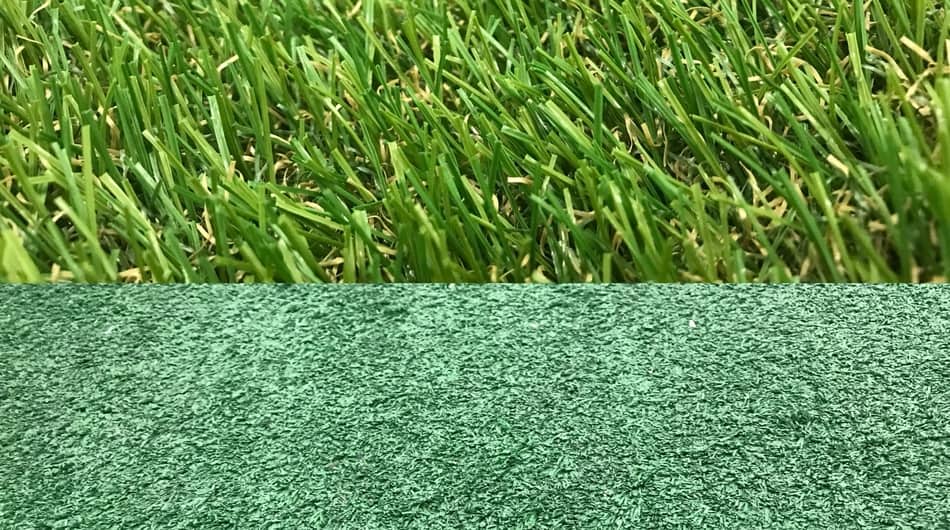
Tired of all things mowing, watering, and weeding and decided synthetic grass was the right route for you? While they sound the same, the pros and cons of artificial grass versus turf are quite different. This guide will lay down what each one is and when its unique characteristics are best for your needs.
Did you know that there are about 28,000 to 180,000 synthetic turf sports fields in the world, with more being installed each year? Artificial turf and artificial grass are popular alternatives for sports fields, parks, and personal lawns throughout the country. If you’re looking to switch to artificial alternatives there are many options for you.
Two of the most popular grass alternatives are artificial grass and artificial turf. Artificial grass and turf may seem like interchangeable terms, but that is not the case. Keep reading to learn about the difference between artificial grass vs turf.
Artificial Grass vs. Turf: Key Differences
The main difference between artificial grass and turf is what it’s used for. Since artificial grass is primarily used for residential homes, it resembles natural grass more than turf. Turf is mainly used for sports fields, so it can weather the wear and tear of constant use without looking worn down, which isn’t a trait it shares with artificial grass.
What Is Artificial Grass?
Artificial grass is used mostly in places of residential or commercial lawns. Artificial grass looks and feels more like its natural counterpart than an artificial turf would. This product is better looking and best used where you wouldn’t want others to notice your yard is artificial.
This type of artificial lawn is mainly for aesthetics rather than softness. Artificial grass is made to resemble a natural lawn whereas turf is more of a functional product. Our artificial grass comes in colors that look like the real thing.
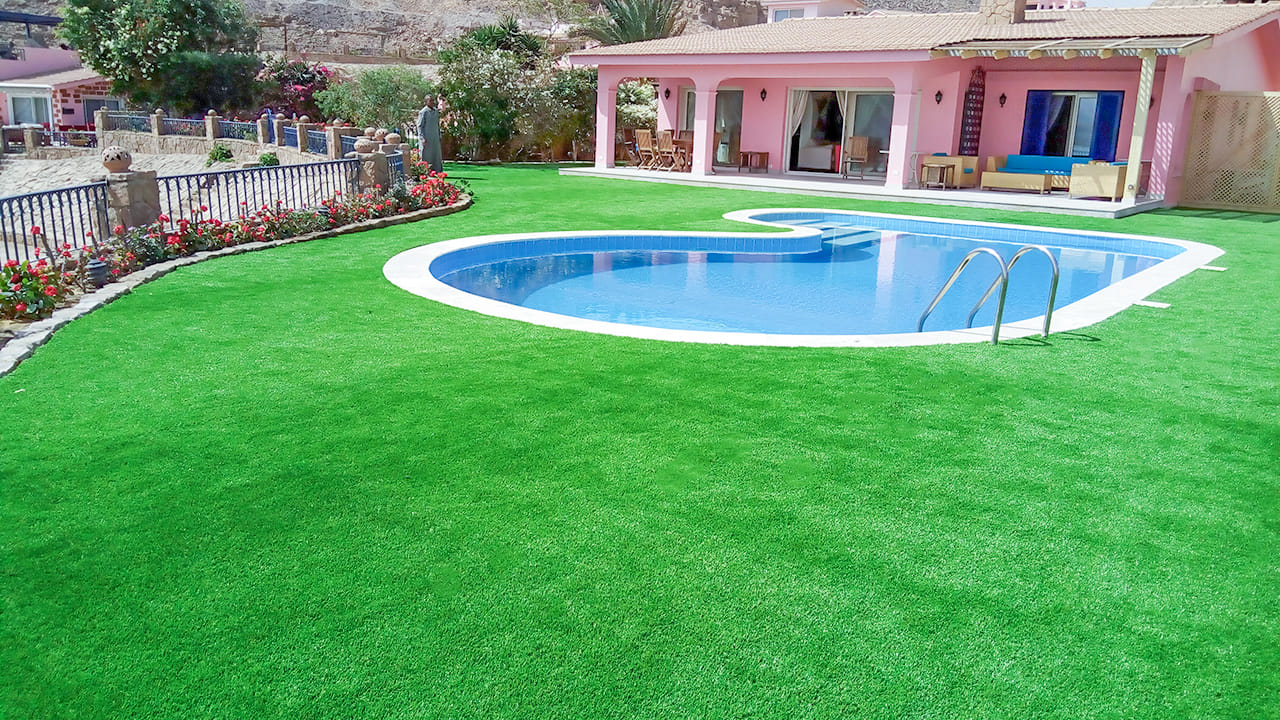
Best for:
- Low-traffic areas so it doesn’t get worn down too quickly and reduce its life span
- Homeowners who want the aesthetically pleasing look and feel of real grass
- Yards that children play and pets roam around on
Pros of Artificial Grass
Not much inconvenient downtime: Rainy weather and pest control limit when you and your family can use your lawn. But since artificial grass dries out quickly (and doesn’t harbor pests), you can continue using it in hours, not days.
Low maintenance: Artificial grass is, well, artificial, so it doesn’t come with the same maintenance requirements as natural grass, like mowing, edging, and seeding.Resembles natural grass: It has a natural grass color, realistic blades that come in different lengths and designs that sway in the wind, and is soft underfoot. Versatile: Since it’s so realistic, you can use artificial grass anywhere you want a pop of green, like a sunroom, backyard, or balcony.
Cons of Artificial Grass
Looks worn over time: Artificial grass is made for looks, not built for constant wear and tear. It can start looking flat and worn after continuous use in high-traffic areas.
Initial cost: This synthetic grass can last for years, saving money on mowing and watering your lawn. However, on average, artificial grass costs around $7–$17 per sq. ft.
Gets hot in the summer: While certain materials that artificial grass is made with can reduce its heat, it can still get fairly hot and might need to be lightly sprayed with water to cool it off.
Can trap bacteria: It can trap blood, skin, and animal waste, leading to bacteria like staphylococci breeding in your grass. So, while you don’t need to mow your lawn, you’ll still need to clean it.
What Is Turf?
Artificial turf has been designed to be tough and durable. These qualities make it perfect to lay on sports fields, playgrounds, parks, and other highly trafficked areas. The design of turf allows it to withstand the constant beating of running players, cleats and keeps a safe playing field even through rain and wind.
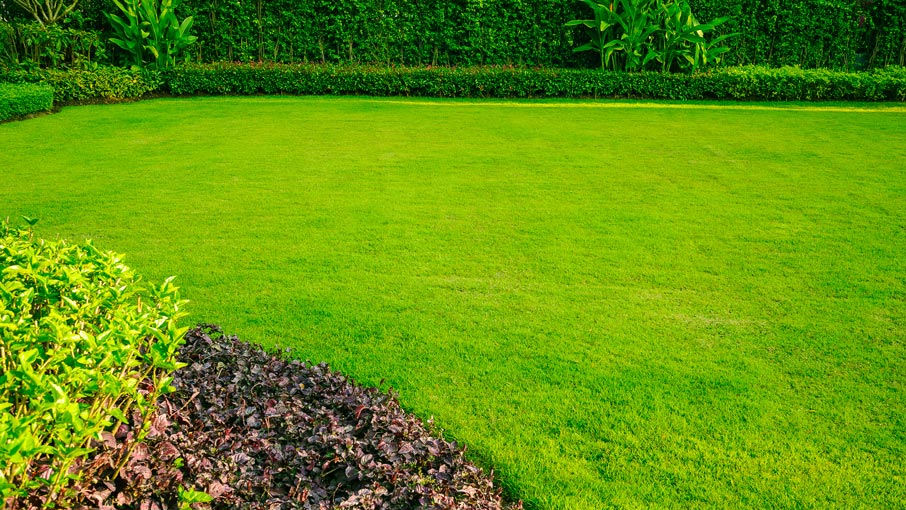
The first artificial turf was used more than 50 years ago, and it has improved a lot over time. Turf now comes in many different options and varieties that are suited for many different locations and activities.
Best for:
- Areas with a lot of foot traffic
- When longevity matters more than aesthetics
Pros of Turf
Durable against harsh conditions: Turf is made for the rough punishment many sports fields endure, so it can withstand energetic kids and pets.
Long-lasting: Since turf can take a few hits, it can last for at least 15 years in rough conditions and potentially even longer in low-traffic areas.
Easy to maintain: Turf doesn’t require frequent watering or mowing to keep it looking its best.
Cons of Turf
High upfront cost: Turf costs around $6–$19 per sq. ft., including labor, which can be initially pricey compared to naturally grown grass.
Unrealistic looking: It’s short, uniform green, and doesn’t feel the same as natural grass, which can be a problem if you want your lawn alternative to look aesthetically pleasing.
Absorbs heat: Turf can get hot in extreme heat conditions, making it uncomfortable to walk on. While a light spritz of water can cool it down, it’s something to consider.
Can harbor bacteria: When bodily substances like animal waste get in your turf, it can become a breeding ground for bacteria like staphylococci. You’ll need to clean it with a water hose to prevent this.
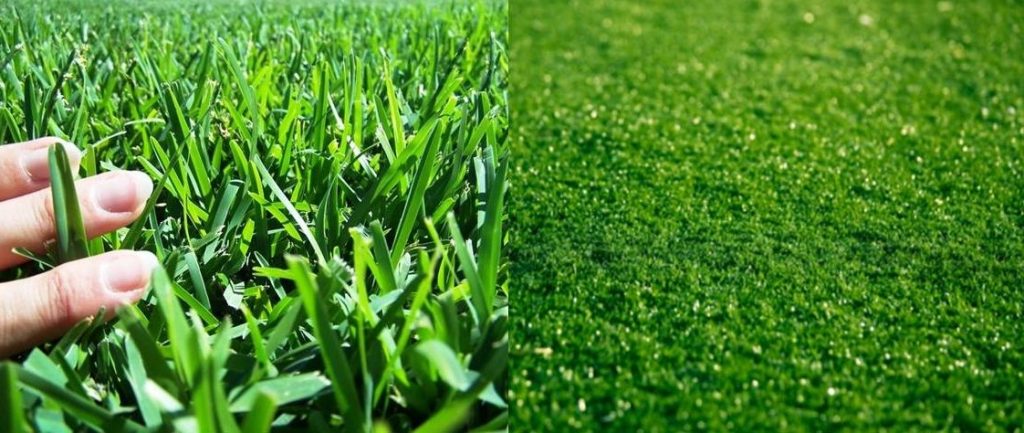
Which Type of Lawn Should You Choose?
We have shared the many benefits of natural grass and artificial turf as well as the different costs that go into each. There are many variables that can’t be accounted for, since homeowners come from different climates and may use the lawn for different reasons. From the comparison above, the cost of natural grass over time, ends up being the more expensive option. The upfront cost of artificial turf will equal the amount paid for installation and maintenance of a natural grass lawn in three to five years. Despite the high upfront costs of installing artificial grass, you will end up saving your wallet and your local water supplies in the long run.
Conclusion:
As we wrap up our exploration of the artificial grass vs. turf dilemma, we hope you feel more confident in making an informed decision for your landscaping needs. Remember, the choice ultimately depends on your preferences, lifestyle, and the unique characteristics of your outdoor space. Happy landscaping!


